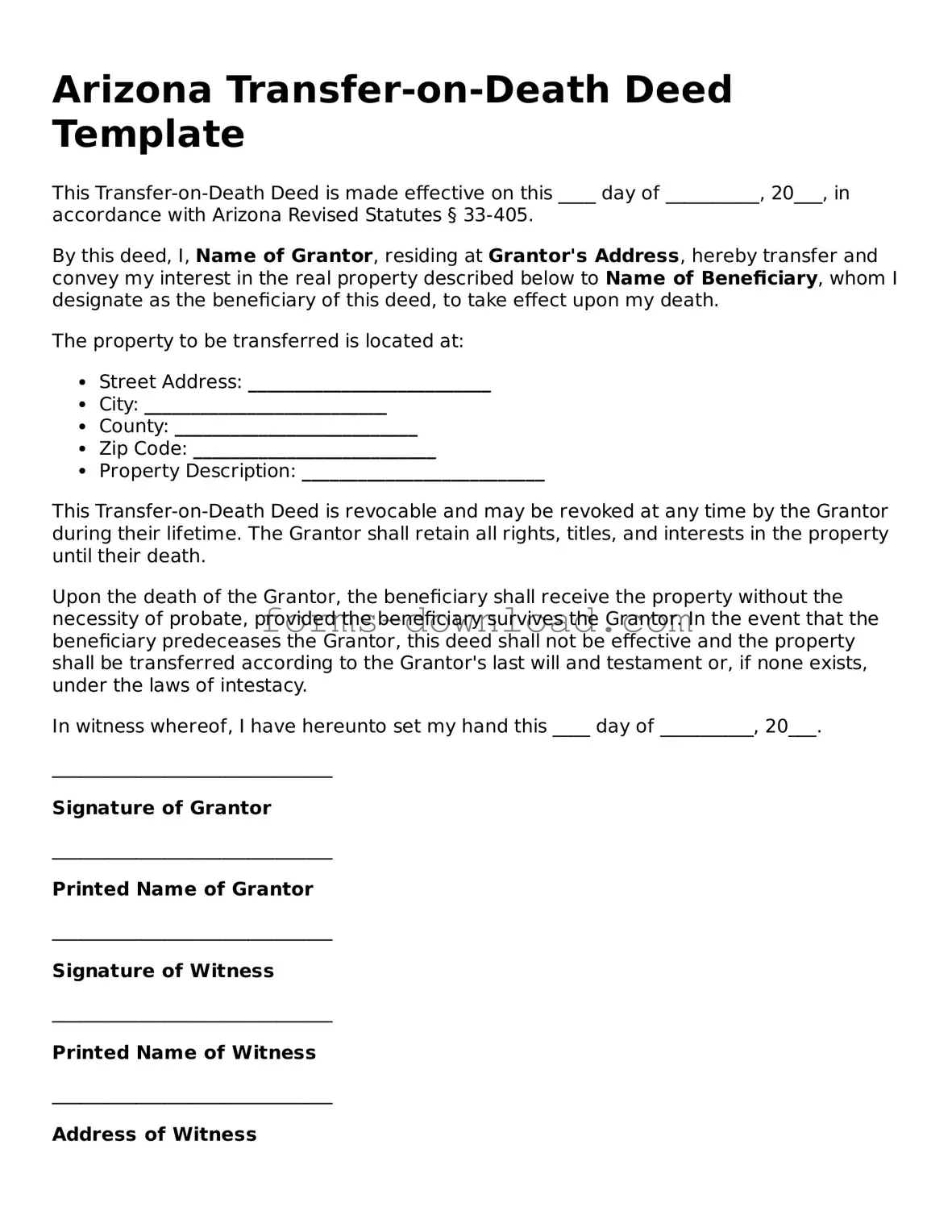Arizona Transfer-on-Death Deed Template
This Transfer-on-Death Deed is made effective on this ____ day of __________, 20___, in accordance with Arizona Revised Statutes § 33-405.
By this deed, I, Name of Grantor, residing at Grantor's Address, hereby transfer and convey my interest in the real property described below to Name of Beneficiary, whom I designate as the beneficiary of this deed, to take effect upon my death.
The property to be transferred is located at:
- Street Address: __________________________
- City: __________________________
- County: __________________________
- Zip Code: __________________________
- Property Description: __________________________
This Transfer-on-Death Deed is revocable and may be revoked at any time by the Grantor during their lifetime. The Grantor shall retain all rights, titles, and interests in the property until their death.
Upon the death of the Grantor, the beneficiary shall receive the property without the necessity of probate, provided the beneficiary survives the Grantor. In the event that the beneficiary predeceases the Grantor, this deed shall not be effective and the property shall be transferred according to the Grantor's last will and testament or, if none exists, under the laws of intestacy.
In witness whereof, I have hereunto set my hand this ____ day of __________, 20___.
______________________________
Signature of Grantor
______________________________
Printed Name of Grantor
______________________________
Signature of Witness
______________________________
Printed Name of Witness
______________________________
Address of Witness
